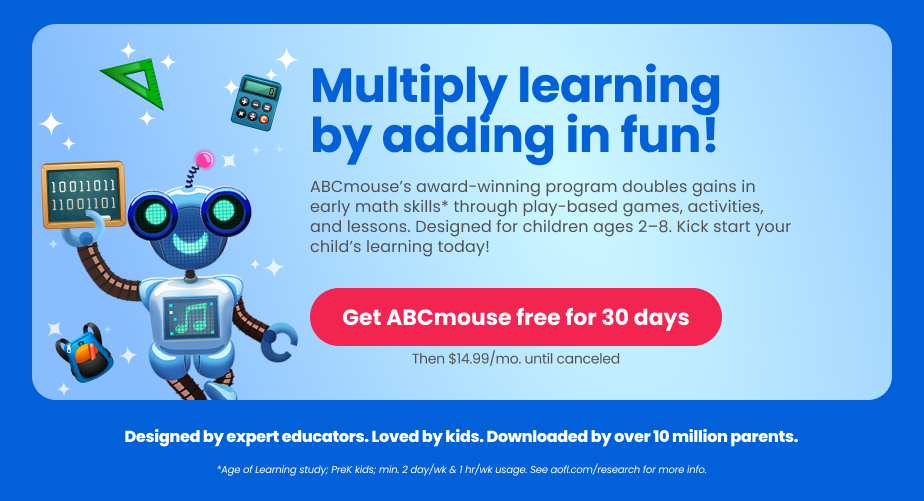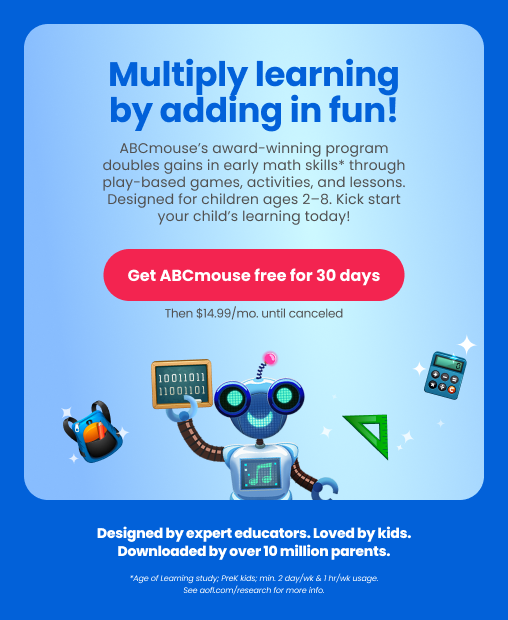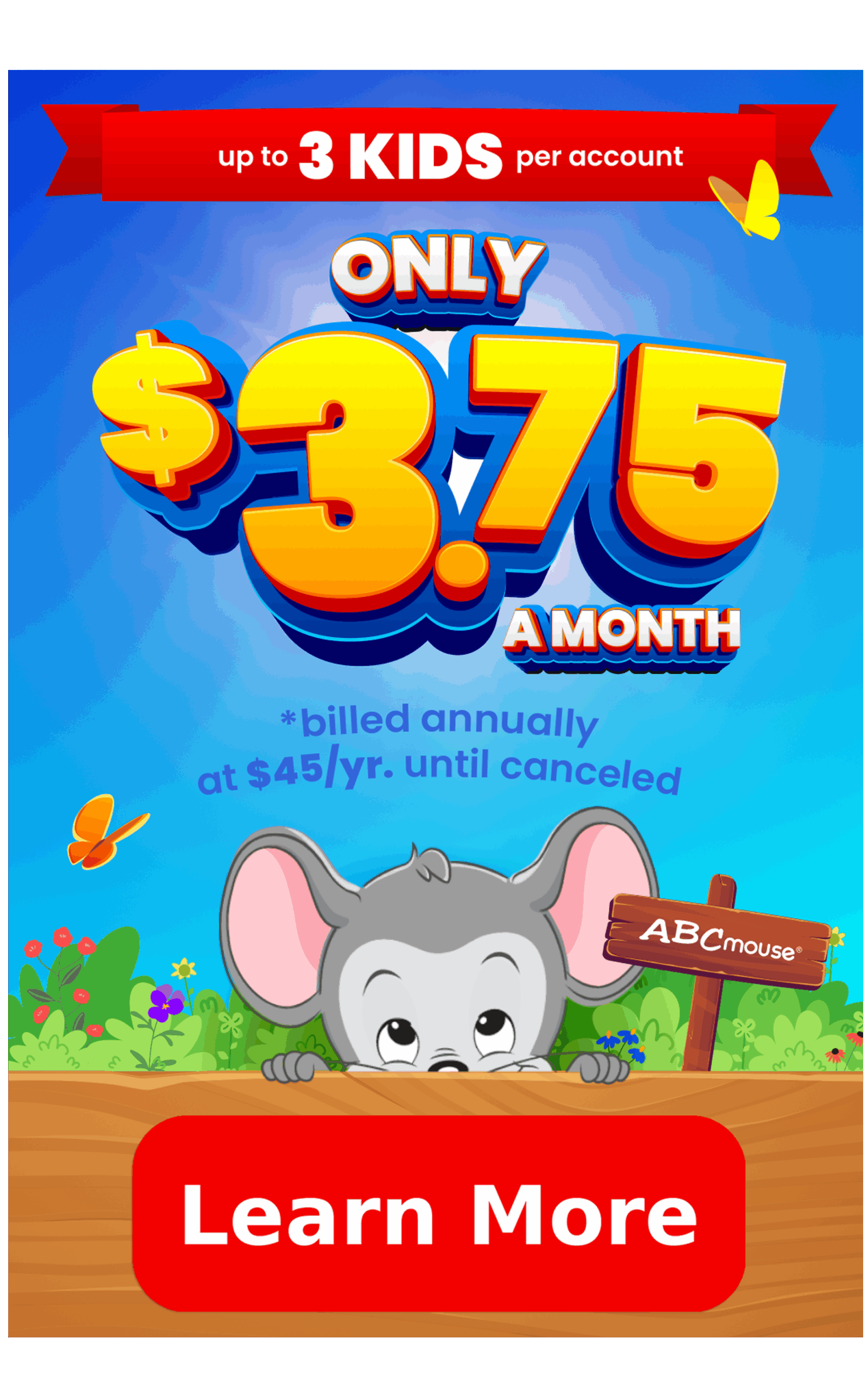
How to Teach Telling Time, Step-by-Step
Get the tips, tools, and activities you need for teaching this key concept.
Reading a clock is an important life skill. Even though digital clocks can make the process easier, kids still need to know how to tell time using an analog clock. Plus, they need to understand the idea of time and sequence, including hours, minutes, and seconds. Here’s how to teach telling time to early elementary students.
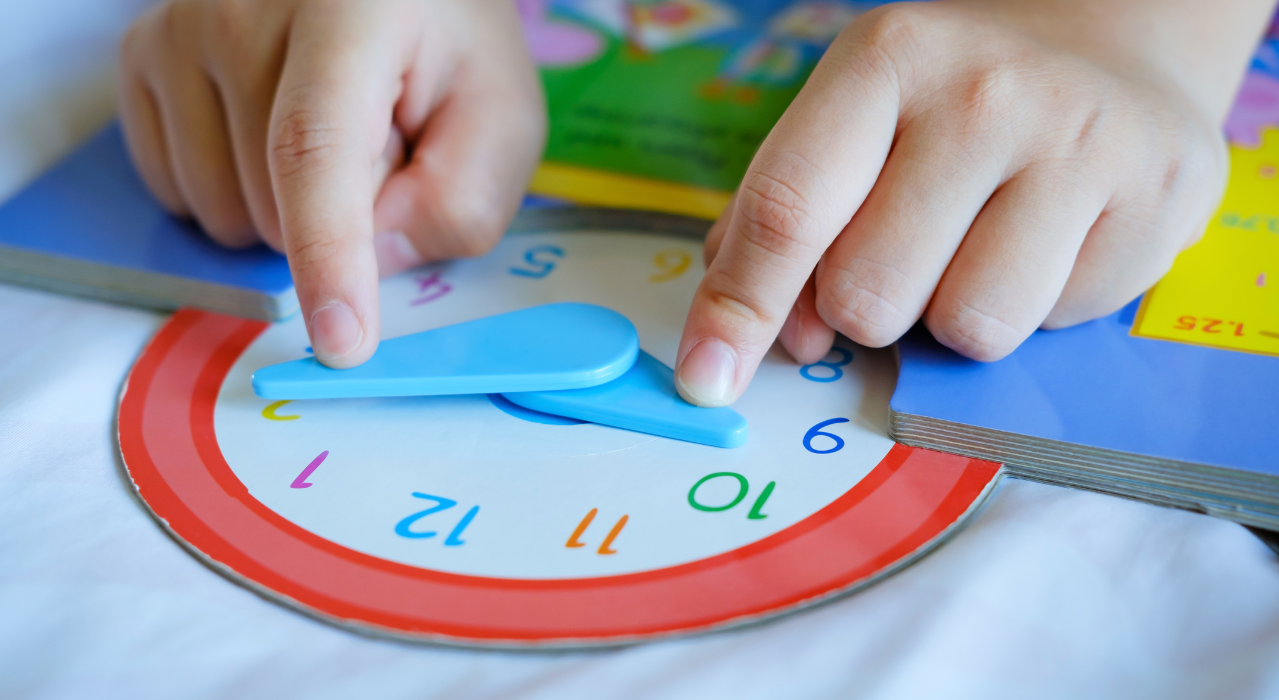
Preparing Kids to Learn How to Tell Time
Before you can tackle time telling skills, your child needs to understand the concept of time overall. As toddlers learn to talk, try to emphasize words like “before,” “now,” “after,” and “later.” Practice sequencing: putting things in order by the time when they happened.
Try this: After reading a story, write down or draw the main events that took place. Ask your child to place the events in order, using words like “first,” “next,” “then,” and “last.”
As kids get older, you can begin talking about the basic units of time: hours, minutes, and seconds. Help them get a sense for about how long each of these units is.
Try this: Show kids how you set a timer when you’re cooking or baking something. Or, use a stopwatch to time how long it takes to complete an activity, like eating dinner or brushing your teeth.
How to Teach Telling Time in First Grade
At this age, most people focus on teaching children to tell time to the hour and the half hour. Kids should also learn the basics of how the face of an analog clock works.
Teach Telling Time to the Half Hour
Start with half hours, then progress to quarter hours. Remember to teach kids that the hour hand moves slowly along from one number to the next as the minutes progress in a clockwise direction that moves to the right; this is something that often trips students up as they learn how to tell time.
One of the biggest errors students make is not knowing which hour is correct when the hour hand is between two numbers. To make this more conceptual and explain WHY to look at the number before, note that the hour hand is halfway past (or “half past”) the hour and has not yet reached the next hour. (e.g. If the hour hand is halfway past the 2, then it’s “half past 2” or “2:30” because it the hour hand is still on its way to the 3 and so has not reached 3:00 yet.)

Try this: Try this: Divide a paper clock five into its 12 five-minute segments, like a pizza. Have students color each segment a different shade, then label the sections with their corresponding hours. See an example of this activity here.
Learn Clock Basics
Start by exploring the parts of a clock face, including the numbers and hands. Show kids how the hands go around, noting that one is shorter than another. Break the clock into 12 pie-shaped segments, and explain that each represents five minutes.
Try this: Make a clock from a paper plate and construction paper. Label the hour and minute hands, and color each five-minute segment a different shade.
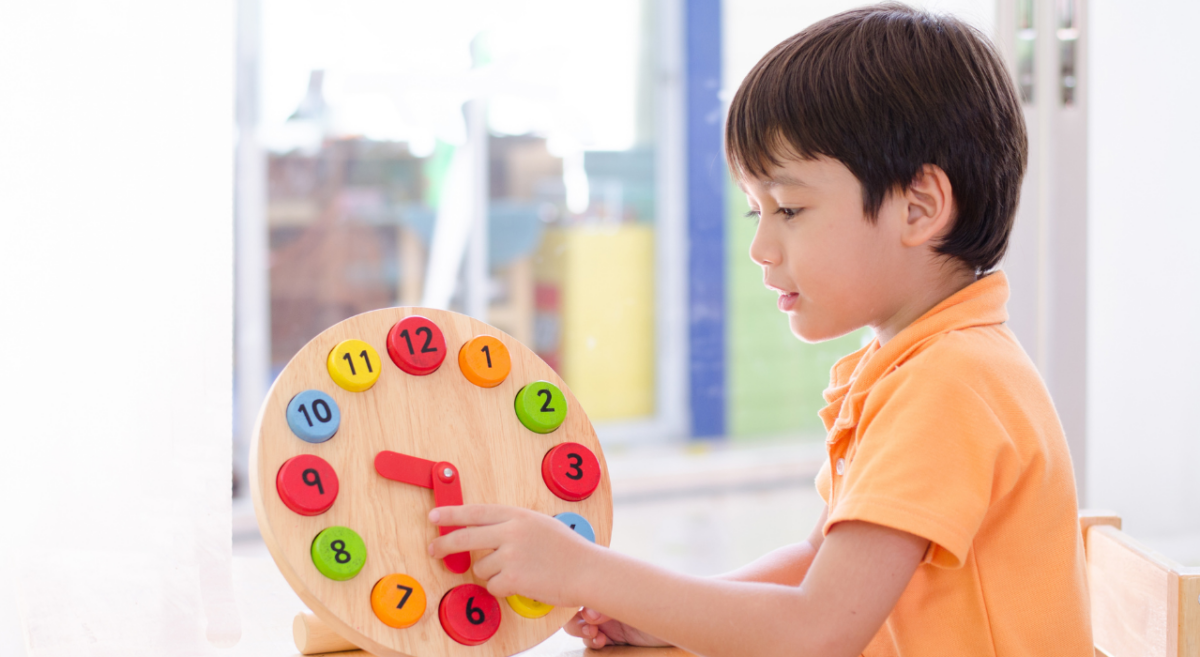
Teach Telling Time to the Hour
Once kids understand a clock face in general, they’re ready to start telling time to the hour. This is as simple as recognizing that the short hand points to the hour, and the long hand points to 12.
Try this: Draw hands on blank clocks to represent important times in your daily schedule. For instance, bedtime at 8 o’clock or dinner at 5 o’clock.
Match Analog and Digital Time
This is also the time to introduce kids to the correspondence between analog and digital time. Explain that four o’clock, 4:00, and a clock with its hands pointing to 4 and 12 mean the same thing. Practice writing digital time as shown on an analog clock.
Try This: Ivan’s Time Machine Game that helps children learn how to read and tell time. By matching pictures of analog and digital clocks with the written times, children learn to identify time in terms of hours, half hours, and quarter hours.
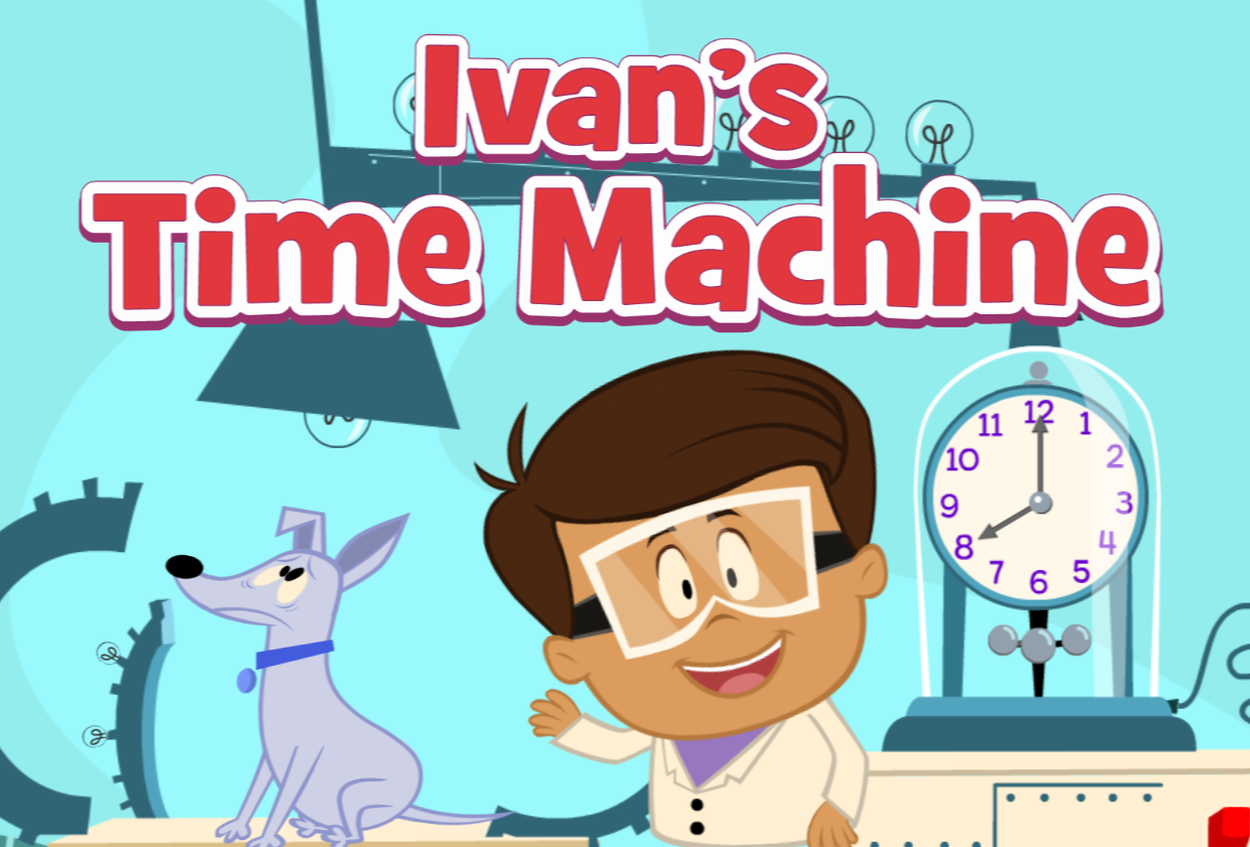
#1 Downloaded Kids’ Education App in the U.S.
The ABCmouse app has so much to offer! You and your child will find 10,000+ games and activities designed by curriculum experts to nurture math and reading skills, along with an extensive digital library and so much more. Our research-back curriculum focuses on preschoolers through second graders.
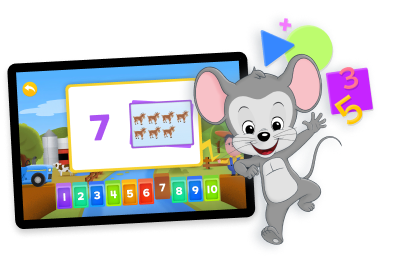
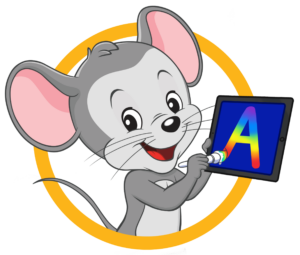
Then just $14.99 a month until canceled
How to Teach Telling Time in Second Grade
At this age, kids are ready for more advanced time telling skills, including telling time to the quarter hour and then to the nearest 5 minutes. You can also introduce “a.m.” and “p.m.” to further specify the time of day. When they’re ready, they can move on to telling time by the second and adding and subtracting time, too.
Introdce ‘a.m.’ and ‘p.m.’
In general, second graders are ready to grasp the concept of “a.m” and “p.m.” You can also introduce the concept of midnight/12:00 a.m. as the starting point for a new day and “a.m” hours and noon/12:00 p.m. as the halfway point in a 24 hour day and starting point for “p.m.” hours.

Teach Telling Time to the Minute
Once kids can count by fives, telling time to the minute becomes easier. (Some students might not be ready for this until third grade, and that’s okay too.) Start with the first half of the hour, in five-minute increments followed by one-minute increments. Then, move on to the to second half of the hour. Remember to emphasize the movement of the hour hand as needed.
Try this: Draw a blank clock face on a whiteboard. Draw a time on the clock, and ask your child to identify the time and write it correctly in digital form. Then, let them draw a time on the clock for you to identify. (Be sure to draw the hour hand in the right position.)

Advanced Time Telling Skills
More advanced skills include understanding how a second hand words. Show them analog clocks with second hands, along with digital stopwatches or timers.
Try this: Race to complete an activity (like stacking 10 blocks) as quickly as possible, using a stopwatch. Then, try to beat your times! Write the times down each time to get some practice.
Eventually, students need to learn to add and subtract time. This is definitely a skill that takes practice, but one that we all need in daily life.
Try this: Tell your child they have one hour to complete an activity. Looking at the clock, ask them what time it is now, and what time it will be when they finish. You can check in with your child to find how much of the hour has elapsed already and to find how much time in the hour is remaining. Change up the times to be more incremental (i.e. half an hour, 20 minutes, one hour and 40 minutes) as their skills progress.
Games and Activities for Teaching Kids How to Tell Time
Make learning to tell time more fun and meaningful with these engaging games and activities.
Telling Time Worksheets
Our free printable telling time worksheets for young learners are a fun way to practice telling time! These worksheets include:
- Telling time to the hour
- Telling time to the half hour
- Telling time to the quarter hour
- Telling time to the minute
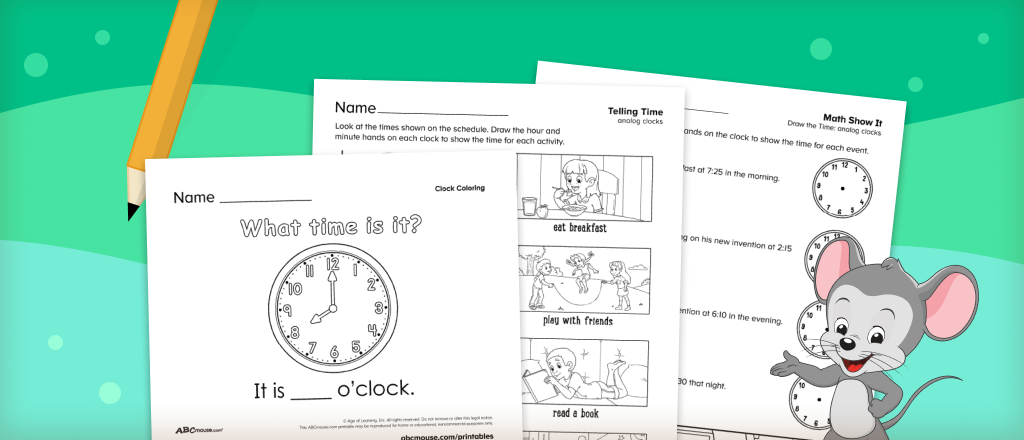
Engaging Games on ABCmouse.com
“Crazy Race: Telling Time” is a captivating game designed to teach children the skill of telling time. Players are challenged to identify times presented in different formats–including the hour, half-hour, and quarter-hour–by matching them with their correct verbal, analog, or digital representations.
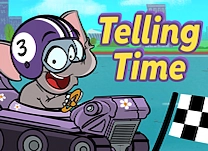
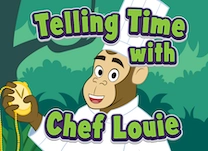
“Telling Time with Chef Louie” is an educational game designed for 2nd graders to learn the difference between a.m. and p.m. through interactive storytelling.
In the game, players help Louie, a monkey, recall his activities from the past week, distinguishing between morning and afternoon/evening events. This game uniquely combines fun with learning, helping children to develop essential time-telling skills and grow their understanding of the concepts of “a.m.” and “p.m.”
ABCmouse doubles early learning gains in reading and math.*
*Age of Learning study; PreK kids; min. 2 day/wk & 1 hr/wk usage. See aofl.com/research for more info.
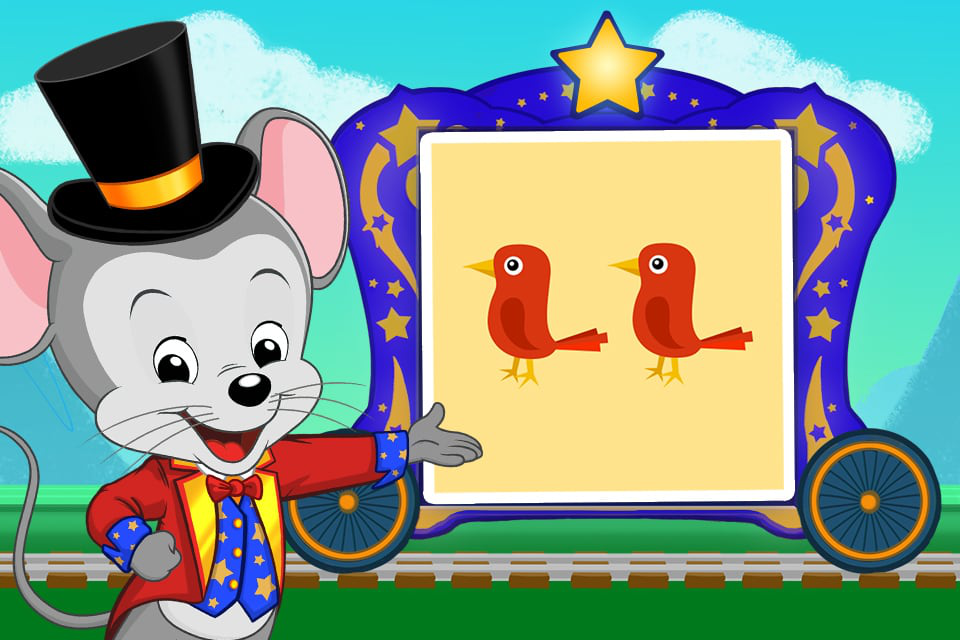
Paper Watches
This works best with a group of children, as in a classroom. Give each child a paper watch with a blank face. Let them decorate the watch bands however they like, then pick a time to write on the face. After you verify the times are written correctly, let kids mix and mingle, taking turns telling the time on each other’s watches.
Clock Bingo
Fill board game squares with analog clocks that match the digital times on the cards you’ll be drawing. As you pull and read out each time, kids mark the place on their board if they have it. First one to get a row across, down, or diagonally wins!
Time Puzzles
Divide index cards into three sections: one with an analog clock, one with the digital time, and one with the time written out into words. Cut the pieces apart like a puzzle, then mix them all up and ask kids to match them back up again.
Time Stories
Practice calculating time by telling short stories that require kids to solve a “mystery.” Here’s an example: “At 3:45, Lin’s mom told her she could have 25 minutes of screen time after she practiced the piano for 40 minutes. What time will Lin finish each activity if she starts right away?” Tip: Use a model clock to help kids visualize the passing minutes.
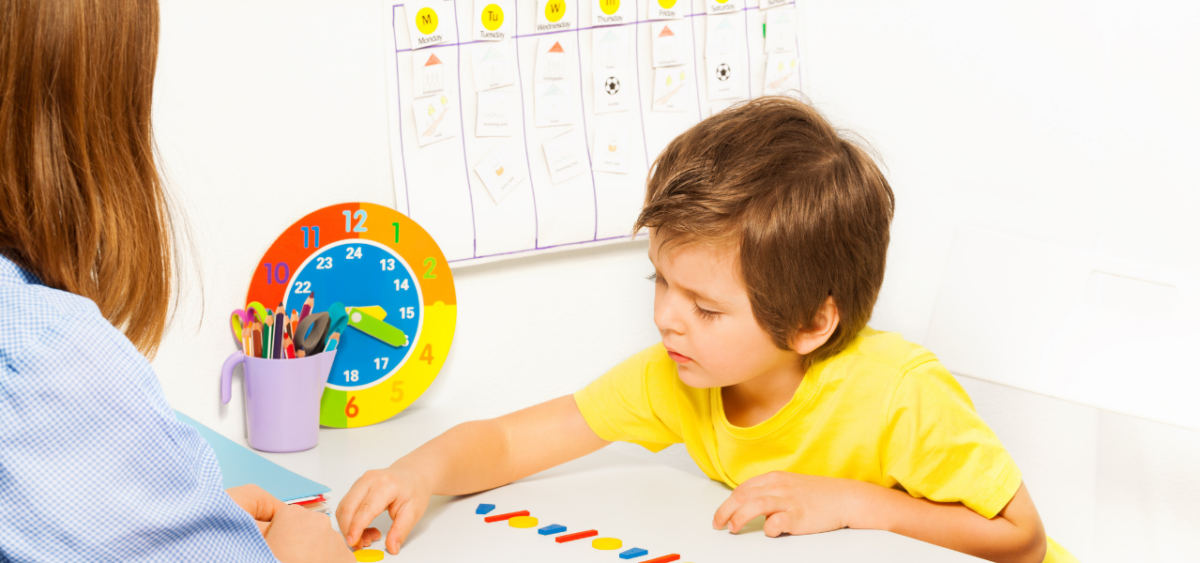
How to Help Students Who Struggle With Telling Time
Learning to tell time takes a lot of practice; it’s not something students learn overnight. Be patient with your child, ensuring they’ve mastered each basic skill before moving on to harder concepts.
Our online learning math program can help make learning math concepts more fun and approachable.
ABCmouse’s expert advice review process:
Our team of ABCmouse Curriculum Experts, made up of talented professionals in early childhood education and development, take a close look at educational content and learning claims. They put in the effort to make sure our information is accurate and current. We have a certified educator or another respected authority review the content, matching their expertise with the topic at hand. They’ll make sure the content is thorough and follows the latest research and educational guidelines. If they think we can make things even better, they’ll chat with our editorial team, and we’ll make those improvements right away. Only after a reviewer gives their thumbs-up does a piece of content get the official stamp of approval in the byline.
Additional Resources
ABCmouse has resources, activities, and games designed by early education experts to help your child on their learning journey. Here are a few examples:
Hands-on Math Activites for Preschool Through 2nd Grade
Explore a variety of engaging activities that can help grow your child’s math skills while having fun.
Browse →
How to Teach Kindergarten Addition
Find tips and insights to help guide you in teaching your child the key concepts of addition.
Browse →
Addition Worksheets for Kindergartners
Give your child an opportunity to practice the addition facts they’re learning with these free printable addition worksheets.
Browse →
Legal Disclaimer: Any information, materials, or links to third-party resources are provided for informational purposes only. We are not affiliated with and do not sponsor/endorse these third parties and bear no responsibility for the accuracy of content on any external site.


